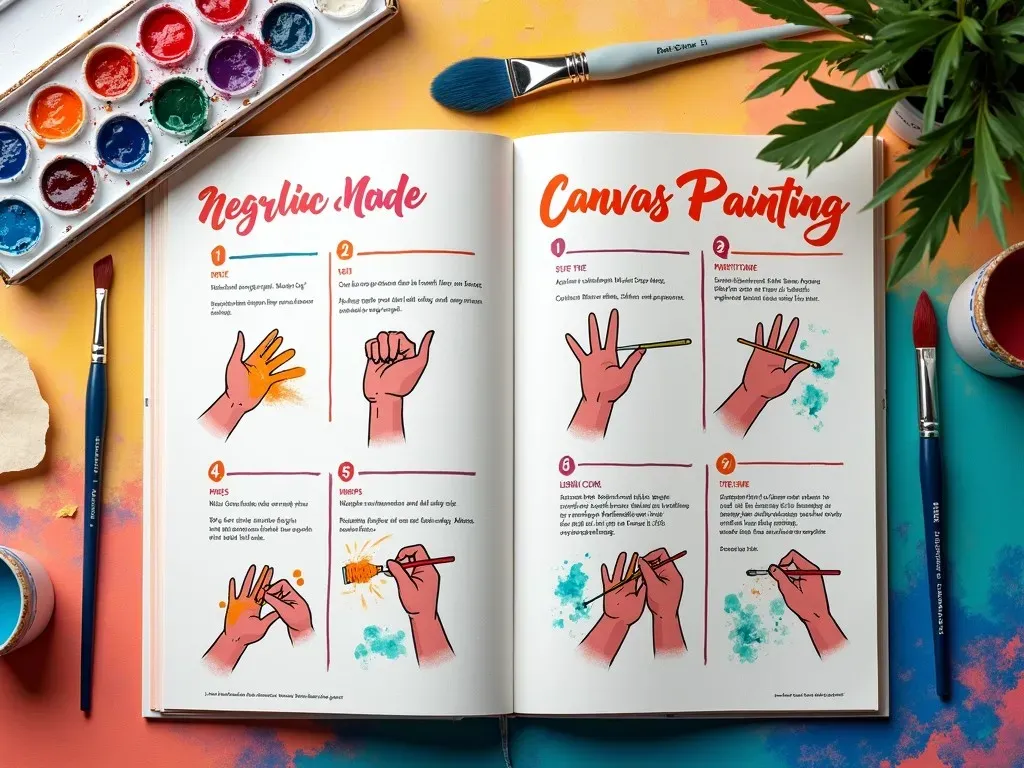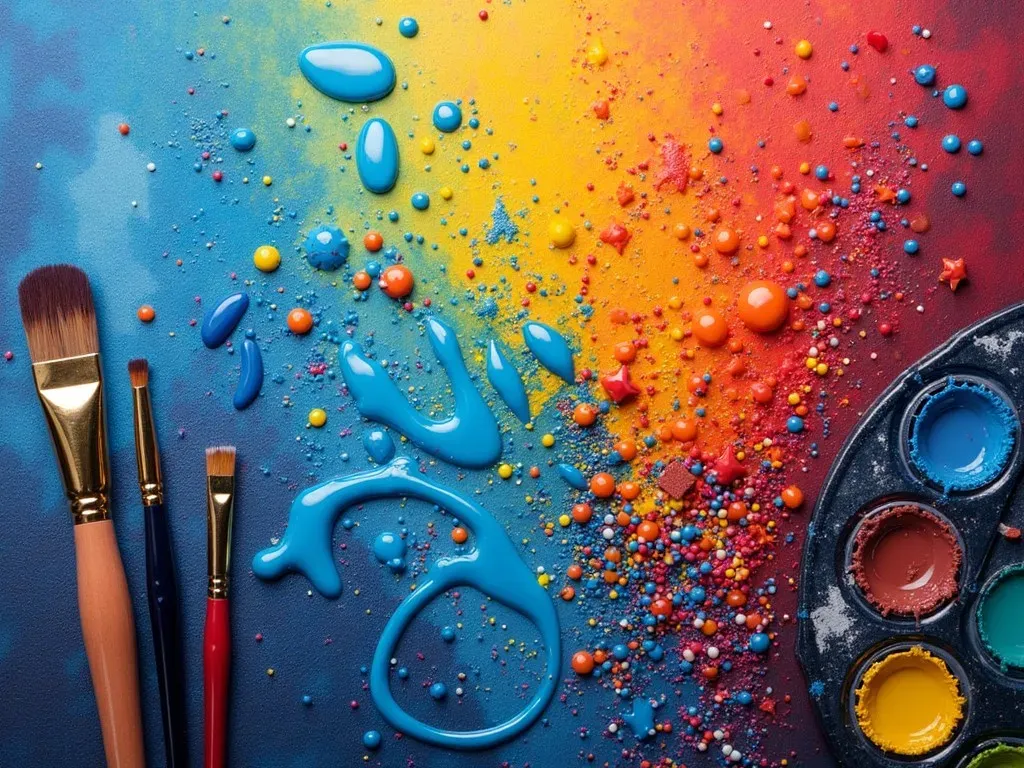Keyword: Beginner acrylic canvas painting
Acrylic canvas painting is an exciting entry point for aspiring artists. With its vibrant colors and versatility, acrylic paint allows for the exploration of various Techniques, making it ideal for beginners. It dries quickly, offers easy clean-up, and can be applied in different styles ranging from realism to abstract art.
Why Choose Acrylics?
Acrylic paint is often recommended for beginners due to several compelling features:
-
Quick Drying Time: Unlike oil paints, which can take days or even weeks to dry, acrylic paints dry within minutes. This allows artists to work quickly and build layers without much wait time.
-
Water Soluble: Acrylics are water-soluble when wet, but once dry, they become water-resistant. This property eases the clean-up process and presents a lower entry cost since you only need water to thin out the paint or clean your brushes.
-
Vibrant Colors: The pigment in acrylics is rich and vibrant, allowing for vivid artwork that stands out.
-
Versatility: Acrylics can be used in various techniques, whether you prefer to work thin like watercolor or thick like oil paint.
-
Affordability: Acrylic paints and Supplies are generally cost-effective compared to other mediums, making it easier for beginners to stock up.
Essential Supplies for Beginner Acrylic Canvas Painting
To start your journey into acrylic canvas painting, you’ll need some basic supplies. Here’s a list of essential items:
| Item | Description |
|---|---|
| Acrylic Paint Set | Look for a beginner set with primary colors and additional hues. |
| Canvas | Stretched canvases or canvas boards in various sizes. |
| Brushes | A variety of brushes (flat, round, and filbert) in different sizes. |
| Palette | For mixing colors. A disposable palette or a flat surface works. |
| Water Container | For rinsing brushes. |
| Paper Towels | For cleaning brushes and sponges. |
| Easel | Optional, but it makes painting more comfortable. |
Basic Painting Techniques for Beginners
There are several painting techniques that beginners should try in acrylic canvas painting. Here are some of the most useful to get started:
1. Blending
Blending involves mixing colors directly on the canvas to create gradients. This technique is great for backgrounds or skin tones.
2. Dry Brush Technique
Using a dry brush to apply paint can create a textured appearance. This technique is perfect for foliage or rough surfaces.
3. Washing
A wash is a diluted layer of paint applied to the canvas. This technique can set the tone of your artwork and is ideal for sky backgrounds.
4. Layering
Building up layers of paint allows for more depth and texture in your artwork. Allow each layer to dry before applying the next.
5. Stippling
This technique involves using the tip of the brush to create dots of color. It’s effective for adding detail and texture, especially in nature scenes.
6. Sgraffito
By scratching through a layer of wet paint to reveal the color underneath, you can create unique textures and designs.
Steps to Create Your First Painting
-
Select Your Subject: Choose a simple subject matter, such as a fruit bowl, landscape, or abstract design.
-
Sketch: Lightly sketch your subject on the canvas. This provides a roadmap for your painting.
-
Background First: Start with the background using a broad brush. Use a wash technique to achieve seamless color transitions.
-
Add Main Elements: Paint the main subjects with layers, starting from the background moving to the foreground.
-
Details: Once the main areas are fully painted, add finer details. Use smaller brushes for this step.
-
Final Touches: Once your painting is dry, evaluate it for any adjustments or additional details.

Tips for Successful Beginner Acrylic Painting
-
Experiment: Don’t be afraid to try different techniques and color combinations. Mistakes are part of the learning process.
-
Use Quality Materials: While it’s okay to start with budget supplies, investing in better-quality paint and brushes will greatly influence your experience and results.
-
Stay Organized: Keep your workspace tidy to enhance focus and creativity.
-
Practice Regularly: The more you paint, the more skilled you will become.
-
Seek Inspiration: Browse beginner painting tutorials online or join local painting groups for support and inspiration.
Fascinating Facts About Acrylic Painting
-
Acrylic paint was first developed in the 1940s and has since surged in popularity among artists across various genres.
-
Many famous artists, including David Hockney and Mark Rothko, have utilized acrylics in their works.
-
Acrylics can mimic both watercolor and oil painting techniques, making them incredibly versatile.
-
Acrylic paints can be used on a variety of surfaces beyond canvas, including paper, wood, and even fabric.
Frequently Asked Questions (FAQ)
Q1: How do I mix acrylic paint?
A1: Use a palette and a palette knife to mix colors. Start with small amounts and gradually blend in more pigments until you reach the desired shade.
Q2: Can I use acrylic paint on other surfaces?
A2: Yes, acrylics can be used on paper, wood, fabric, and even some plastics, depending on the type of acrylic paint.
Q3: How do I store leftover paint?
A3: Seal the paint in airtight containers to prevent it from drying out. Adding a bit of water can help extend its lifespan.
Q4: What if I accidentally mix the wrong colors?
A4: Experimentation is key! Sometimes unintentional mixes can lead to unique colors and effects.
Q5: How long does it take for acrylic paint to dry?
A5: Acrylic paint can dry within minutes, but full curing can take up to 24 hours.
For more tips and tutorials, you may visit Acrylic Painting School for comprehensive resources tailored for beginner acrylic canvas painting.
 acrylic painting techniques">
acrylic painting techniques">
With this guide in hand, any beginner can start their journey through the vibrant world of acrylic canvas painting. Whether you’re painting a serene landscape or an abstract masterpiece, the only limit is your imagination.
